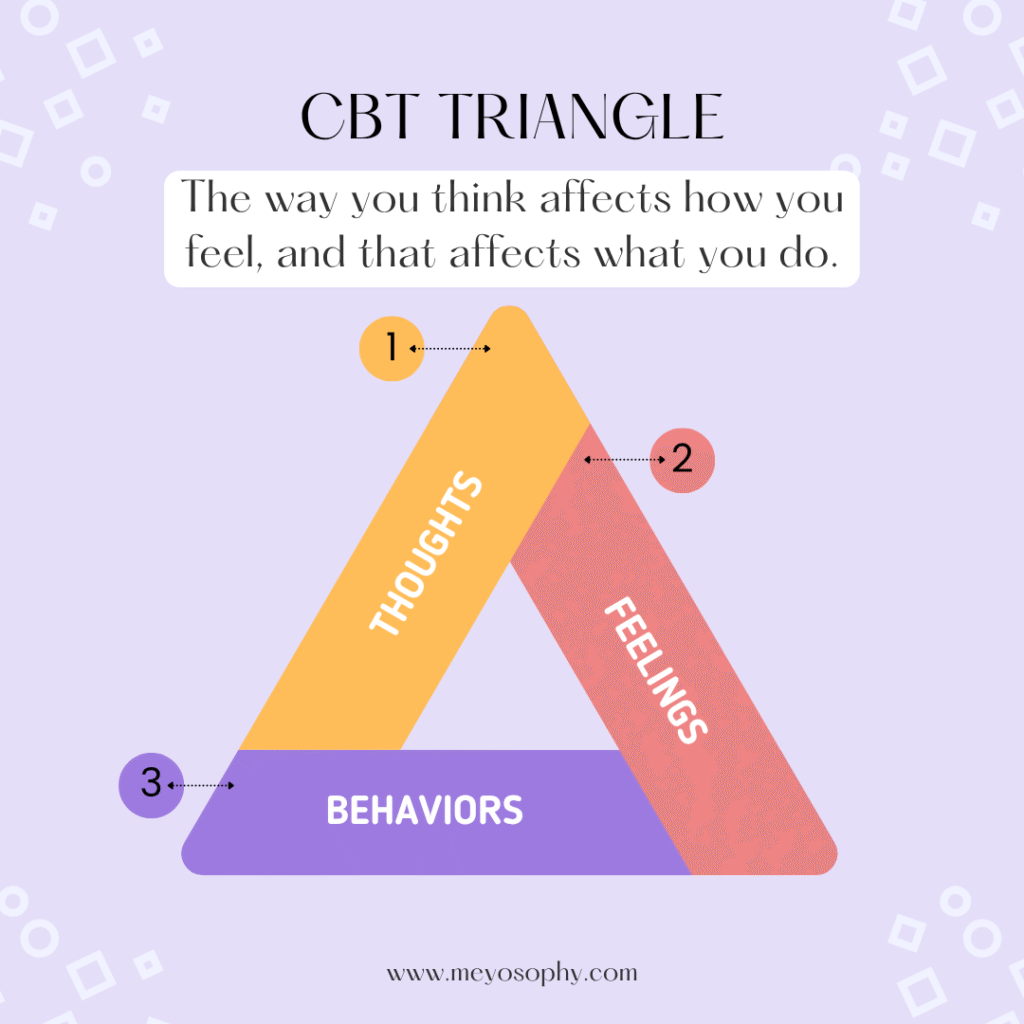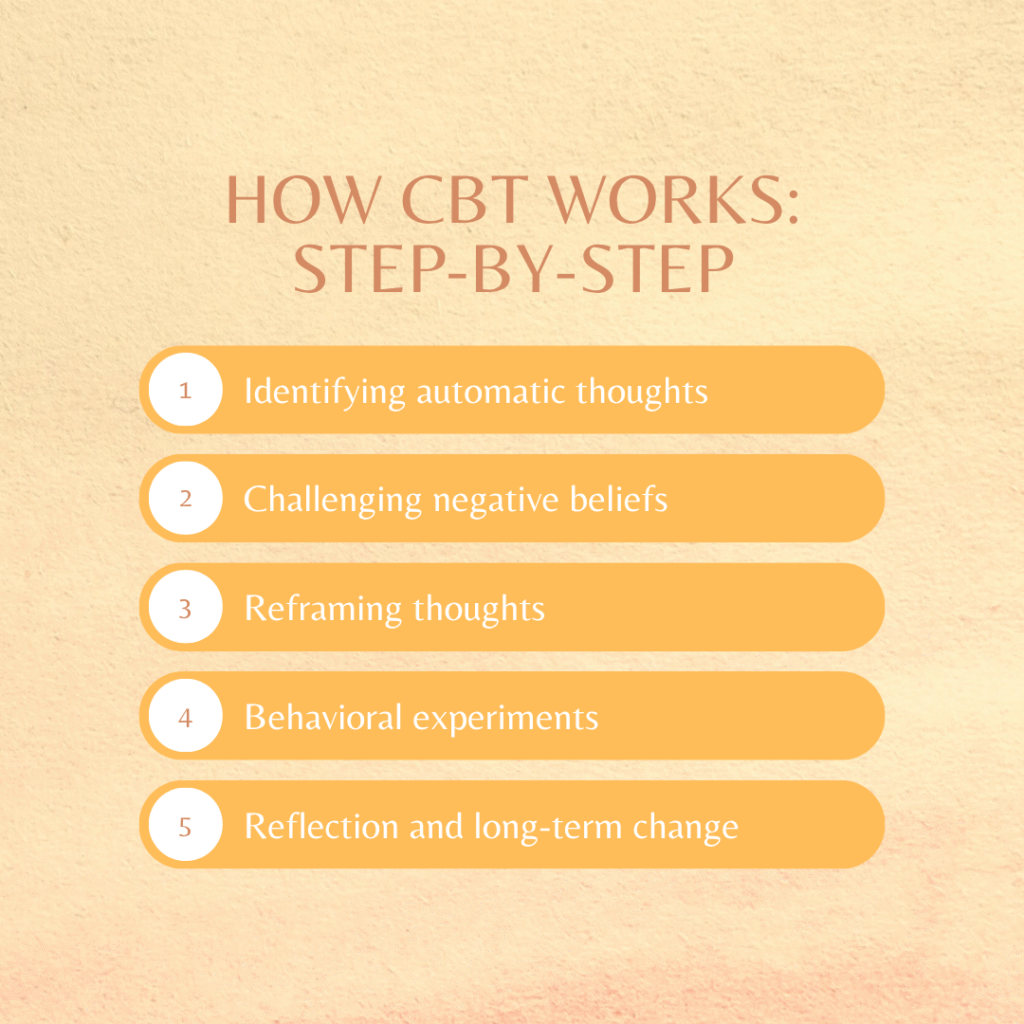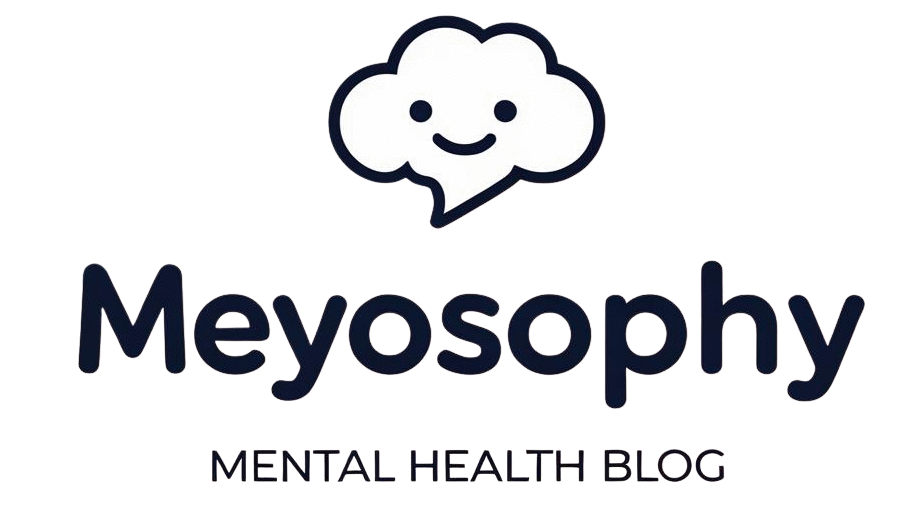Have you ever caught yourself spiraling after a small mistake? Maybe you sent a message and immediately thought, “That was so awkward. Everyone must think I’m weird.” And suddenly you’re replaying the whole conversation in your head, feeling worse by the minute.
Welcome to the club: the overthinking club.
But here’s the good news: there’s a tool that can help you break that cycle, and it’s called Cognitive Behavioral Therapy, or CBT.
In this beginner’s guide, I’ll walk you through what CBT actually is (no clinical jargon, promise), how it works, and why so many people find it life-changing.
What Is CBT?
Cognitive Behavioral Therapy is a form of talk therapy that focuses on the connection between your thoughts, feelings, and behaviors. It’s based on a simple idea:
The way you think affects how you feel, and that affects what you do.
That means if your thoughts are constantly negative or distorted (“I’m a failure,” “Nothing ever works out for me,” “Everyone hates me” ) it impacts how you experience the world.
CBT helps you spot those thoughts, challenge them, and shift them into something more balanced and realistic. It doesn’t mean you’re lying to yourself or forcing “positive vibes only.” It just means learning to see the whole picture, not just the worst-case scenario.

Why Is CBT So Popular?
CBT is one of the most researched forms of therapy and has been shown to be highly effective for:
- Anxiety (social anxiety, panic, phobias)
- Depression
- Obsessive thoughts or compulsive behaviors (OCD)
- PTSD and trauma
- Burnout and chronic stress
- Insomnia
- Low self-esteem and negative self-image
It’s practical, structured, and focused on giving you tools, not just talking about your problems.
What Happens in a CBT Session?
Think of a CBT session as part check-in, part mental gym. It’s not just talking endlessly about your past (although that can come up). Instead, you and your therapist will:
- Explore specific thoughts and behaviors that are bothering you
- Look at patterns or triggers
- Learn strategies to challenge and reframe those thoughts
- Practice small experiments or changes between sessions

Let’s say you often think, “I always mess things up.”
In CBT, you’d work on breaking that down:
- Is that really always true?
- Are there situations where that isn’t the case?
- How does that thought make you feel or act?
- What would a more balanced version sound like?
Instead of aiming for “perfectly happy,” CBT helps you aim for mental flexibility and that’s way more powerful.
CBT Techniques You Might Use
Some common CBT tools and techniques include:
🧩 Cognitive restructuring – Learning to identify, challenge, and change unhelpful thoughts
📝 Thought diaries – Writing down automatic thoughts and reflecting on them
📅 Behavioral activation – Doing things even when you don’t “feel like it,” to break the cycle of withdrawal
🧠 Socratic questioning – Asking curious, non-judgmental questions to explore your beliefs
📉 Exposure – Gradually facing fears in a supported way, instead of avoiding them
A good CBT therapist will help you pick what works for you, and you’ll go at a pace that feels manageable, not overwhelming.
What If You’re Not in Therapy (Yet)?
You don’t have to be in therapy to benefit from CBT principles. There are some great CBT-based apps and books that make the techniques accessible:
- Woebot (free chatbot with CBT-based check-ins)
- CBT Thought Diary (perfect for journaling your thoughts)
- The Happiness Trap by Russ Harris (based on ACT, a close cousin of CBT)
- Feeling Good by David Burns (classic CBT read)

Of course, working with a licensed therapist is ideal, especially if you’re dealing with deeper issues like trauma or persistent anxiety. But there’s no shame in starting small: a workbook, an app, or just paying attention to your thoughts can be a great first step.
CBT Isn’t About “Fixing” You
This part is really important.
CBT isn’t about “fixing” your personality or pretending bad things didn’t happen. It’s not about fake positivity or slapping affirmations on top of burnout.
It’s about learning to relate to your thoughts differently, with more curiosity, more kindness, and more awareness.
You don’t have to believe every thought your brain throws at you. CBT gives you the skills to question them, shift them, and respond in a healthier way.
Final Thoughts: Should You Try CBT?
If you’ve ever felt stuck in a loop of self-doubt, anxiety, overthinking, or low energy CBT might be worth exploring. You don’t need to be in crisis. You just need to be open to looking at your thoughts with fresh eyes.
Because sometimes, the way you talk to yourself is the biggest thing standing in your way. And with CBT, you can learn to talk back.
Disclaimer: I’m not a mental health professional, everything here is shared from research and personal experience. If you’re feeling overwhelmed or need support, please consider talking to a qualified professional. You’re not alone. If you’re in the U.S., you can call or text 988 anytime. For help in other countries, visit https://findahelpline.com.


Sure, what’s your question?
This post does a great job of breaking down cognitive behavioral therapy in a clear and approachable way. I appreciate how you explained the key concepts without overwhelming jargon, making it easier to understand how CBT can help with everyday challenges. Definitely a helpful read for anyone curious about therapy options!
Thank you so much. Glad you’ve found it helpful!
Interesting! I’m going to look into this more.
Worth a look😊
Great information on CBT! Sounds like something I need to try. I enjoyed learning more about it.
That’s great to hear, glad you’ve found it helpful😊
This is such a clear and accessible explanation of CBT! I love how you started with that relatable example of spiraling after sending a message – that immediate “everyone must think I’m weird” thought is so familiar. Your explanation of the thoughts-feelings-behaviors connection makes it feel much less intimidating than clinical descriptions usually do.
What really stands out is how you emphasize that CBT isn’t about “fixing” yourself or forcing positivity. That distinction is so important because I think many people avoid therapy thinking it means there’s something fundamentally wrong with them.
The practical resources you mentioned are great too – having options for people who aren’t ready for therapy yet but want to start somewhere is really valuable. Thanks for making mental health tools feel approachable and non-judgmental. This is the kind of post that could genuinely help someone take that first step! 🧠✨
Thank you for your kind words😊
I’m not sure why but this website is loading extremely slow for me. Is anyone else having this problem or is it a issue on my end? I’ll check back later on and see if the problem still exists.
I’m not sure. I haven’t heart that feedback before, I’ll look into it. Thank you!